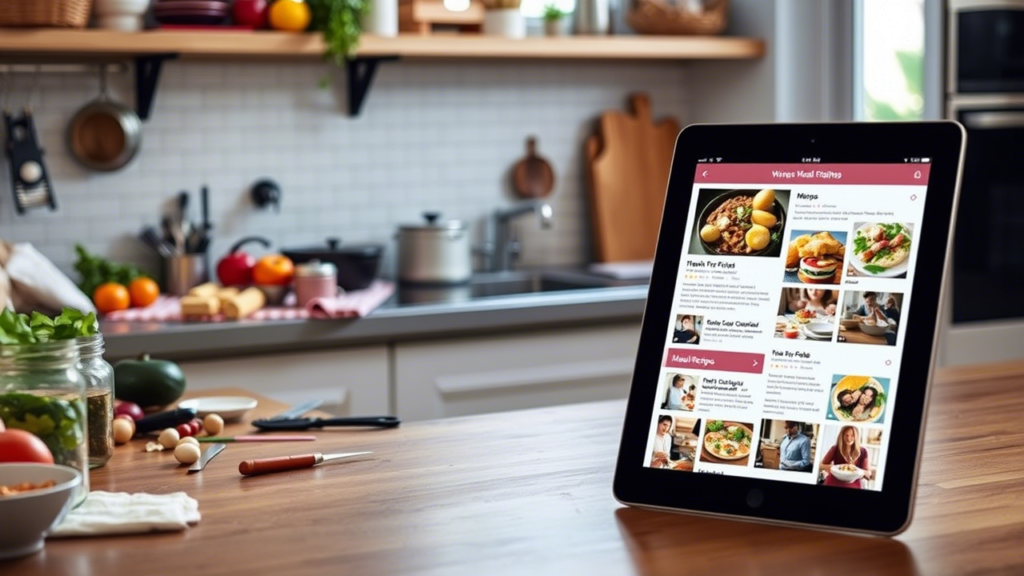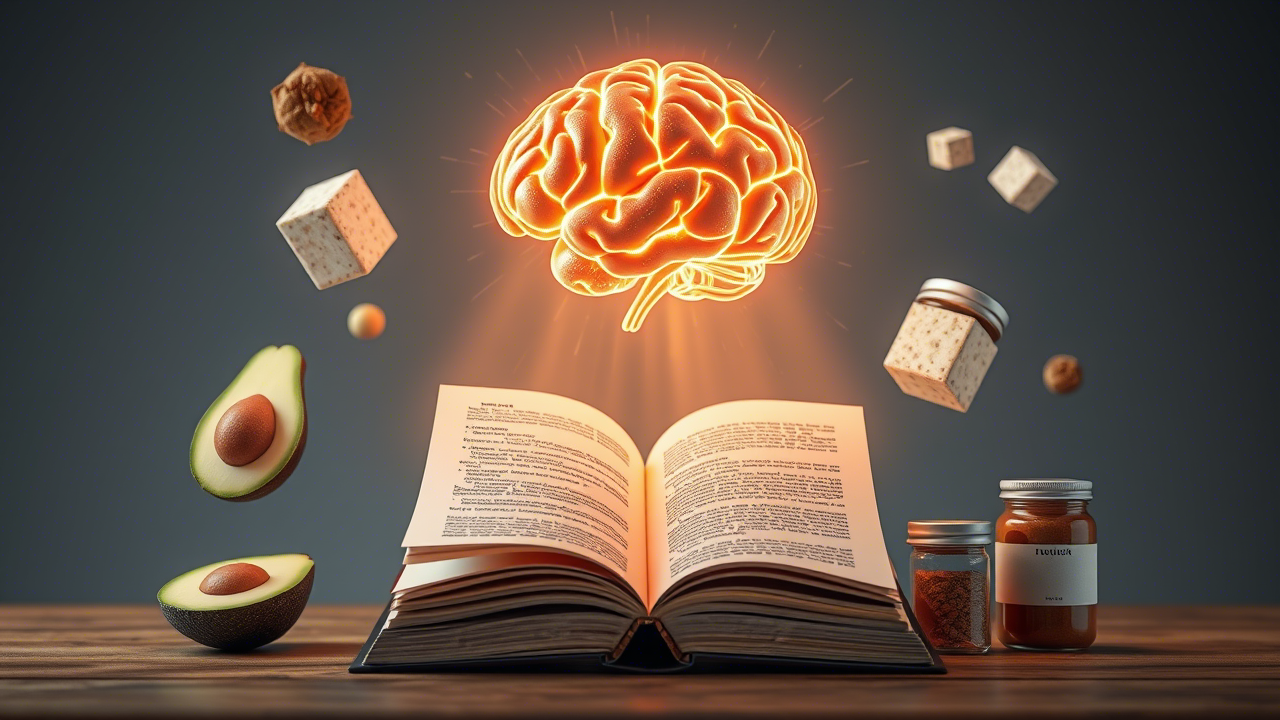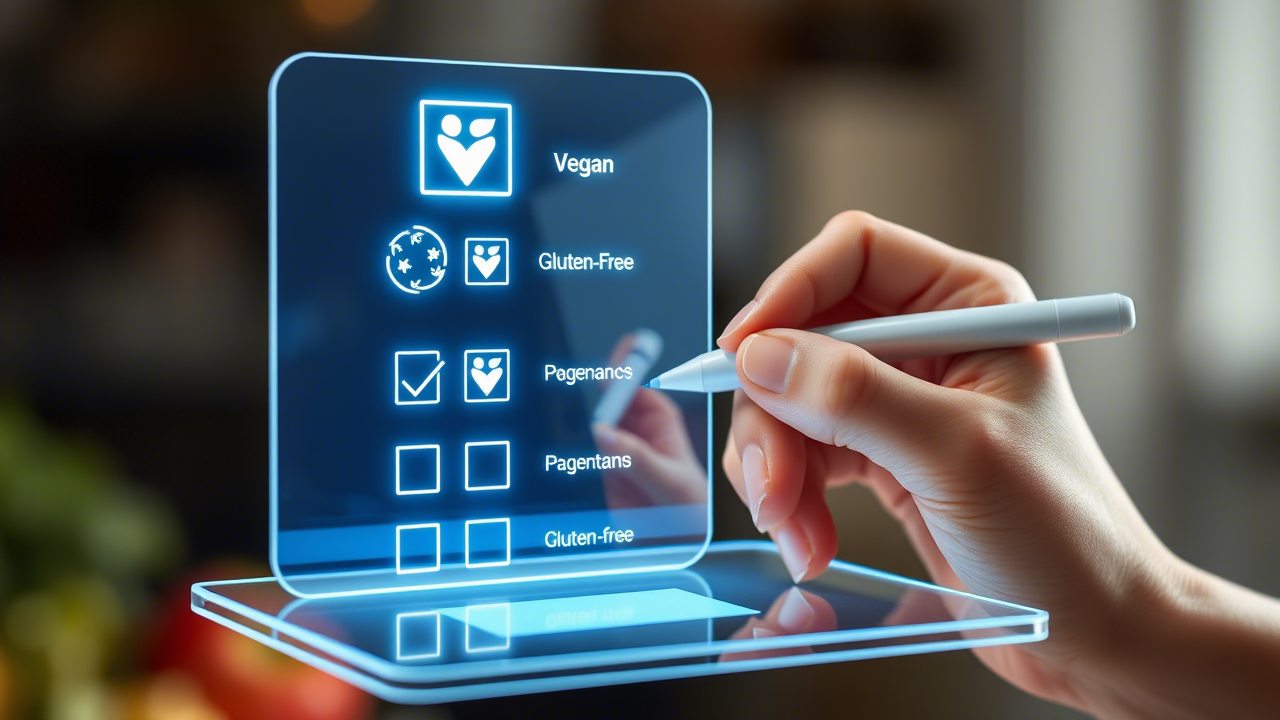Imagine this: It’s 6:30 PM, and you’re standing in front of an open fridge, staring at a jar of pickles, half a bell pepper, and existential dread. Your dietary restrictions demand gluten-free, your kid hates vegetables, and your job swallowed your soul (and free time). Sound familiar? For millennia, meal planning was an act of survival, a blend of tradition and improvisation passed down through generations. But today, we’re outsourcing that primal instinct to an algorithm. Enter ChatGPT—a digital sous-chef that doesn’t sleep, judge, or burn the roux.
ChatGPT isn’t just another app; it’s a culinary revolution hiding in plain sight. Like the printing press democratized knowledge, AI-generated recipes are dismantling the gatekeeping of gourmet cooking. Suddenly, “custom meal plans” aren’t reserved for celebrity chefs or wellness influencers charging $200 an hour. Type “low-carb dinner under $10” into the prompt box, and voilà: a week of meals materializes, optimized for your budget, allergies, and that half-bell-pepper dilemma. But here’s the kicker: Is this convenience liberating us—or are we surrendering the last vestiges of culinary creativity to the machines?
The tool’s magic lies in its chameleon-like adaptability. Need keto? Vegan? A fusion of Thai and Tex-Mex? ChatGPT doesn’t blink. It remixes global cuisines, balances macros, and even troubleshoots substitutions (“No coconut milk? Try cashew cream!”). Yet, as we marvel at its meal prep efficiency, we’re forced to ask: When algorithms dictate what’s for dinner, do we risk losing the human stories behind our food? Or is this simply the next logical step in a world where time is the ultimate luxury?
The Culinary Oracle: Decoding ChatGPT’s Recipe for Rationality
ChatGPT’s meal-planning prowess isn’t magic—it’s math. At its core, the AI relies on NLP for meal planning , parsing user inputs like “gluten-free” or “budget-friendly” into structured outputs. Think of it as a hyper-efficient librarian, cross-referencing billions of text snippets to predict the likeliest response. When you ask for a “3-day vegetarian meal plan under $50,” it tokenizes your query, maps patterns from its training data (pre-2023, mind you), and generates a logical sequence: recipes, shopping lists, cost breakdowns.
But here’s the catch: Like the telegraph reshaped communication, ChatGPT’s outputs are constrained by its training. It knows of turmeric’s anti-inflammatory properties but not the 2025 study debunking its superfood status. Its “creativity” is combinatorial, remixing existing ideas rather than inventing new ones. So when it suggests a quinoa-stuffed acorn squash, is that culinary genius—or just statistical probability?
Consider this interaction:
User: “Create a 3-day vegetarian meal plan for a budget of $50.”
ChatGPT: Day 1: Lentil curry ($8), roasted veggies ($6)… Total: $47.50.
Impressive? Absolutely. Flawless? Not quite. The AI might overlook seasonal produce prices or misjudge regional availability, because its “knowledge” is frozen in 2023 amber. Yet, this tension—between utility and limitation—is where the tool thrives. It’s an AI recipe generator that doesn’t pretend to replace human judgment; it merely amplifies it.
But as we delegate dietary decisions to algorithms, we must ask: Are we empowering home cooks—or outsourcing cultural heritage to a machine trained on yesterday’s recipes? When ChatGPT pairs tikka masala with avocado toast, is that fusion or falsification?
Blueprint and Rebellion: Commanding ChatGPT’s Culinary Algorithm
Let’s get real: Using ChatGPT for meal planning isn’t just about typing “dinner ideas” and calling it a day. This section breaks down how to actually boss the AI around—setting your dietary rules, refining its wonky suggestions, and keeping your human intuition in charge. Think of it as training a stubborn but talented sous-chef.
Define Your Parameters — The Architectural Blueprint
Crafting a meal plan with ChatGPT begins with boundaries—your boundaries. Like an architect drafting blueprints, you must define the pillars: budget ($100/week?), dietary laws (vegan? keto?), cuisine cravings (Tuscan? Sichuan?), and time constraints (30-minute meals only). This step isn’t just practical; it’s philosophical. By dictating parameters, you’re asserting control over an algorithm designed to offer control. But here’s the paradox: Can a machine trained on mass data truly understand the intimacy of your hunger?
Ask the Right Questions — The Art of Culinary Interrogation
Precision is your weapon. Instead of “Give me recipes,” channel Ada Lovelace’s algorithmic rigor: “Low-carb dinner ideas under 30 minutes using chicken thighs and cauliflower.” The more specific the prompt, the less ChatGPT drowns in its own chaos. Think of it as querying the Library of Alexandria—if the librarians were trained on TikTok food trends. But what biases lurk in that training data? When you ask for “budget-friendly lunches,” is the AI privileging corporate food systems or grassroots frugality?
Refine and Iterate — The Sculptor’s Chisel
ChatGPT’s first draft is raw marble; you must carve. Respond with “Swap tofu for chickpeas,” or “Add fiber counts,” and watch the algorithm adapt. This iterative dance mirrors Tesla’s iterative design process—except here, the stakes are your dinner. But as you tweak, consider: Are you refining taste, or just polishing the algorithm’s blind spots? When you demand “less oil, more umami,” does the AI truly grasp your definition of umami, or is it regurgitating a consensus?
Export and Organize — The Gutenberg Parenthesis
Finally, transform chaos into order. Copy-paste ChatGPT’s output into a spreadsheet, color-code grocery lists, or sync it to a smart fridge. This act of formatting echoes Gutenberg’s press—democratizing information, yet flattening it into uniformity. But as you automate, ask: Does a shareable calendar of AI-generated meals make you a culinary pioneer or a passive consumer? When your shopping list is algorithmically optimized, what’s lost in the transition from handwritten notes to digital efficiency?
From Stir-Fry to Synthesis: ChatGPT’s Recipe Renaissance
Ever asked ChatGPT for a recipe and gotten something weirdly… innovative ? Here, we’ll explore how the AI jumps from “dump dinner” basics to fusion dishes that sound like they belong in a sci-fi cookbook. Is it genius or garbage? You decide.
Example 1: Basic Recipe Generation — The Pantry’s Last Stand
“Generate a chicken stir-fry recipe with pantry staples.”
ChatGPT responds with a dish featuring soy sauce, garlic, and rice—mundane ingredients transformed into a coherent meal. This is the AI equivalent of the microwave dinner, but with a twist: you control the variables. Yet, as the algorithm churns out recipes, we must ask: Are we celebrating resourcefulness or surrendering to culinary minimalism? When every home cook becomes an algorithmic executor, does the pantry lose its poetry?
Example 2: Advanced Customization — Fusion or Confusion?
“Create a fusion recipe combining Mexican and Korean flavors.”
The AI suggests bulgogi tacos with kimchi salsa and gochujang crema—a dish that would’ve been unimaginable before the internet flattened culinary borders. Like the Silk Road’s spice traders, ChatGPT acts as a digital intermediary, blending traditions. But is this fusion a triumph of globalization or a erasure of authenticity? When a machine pairs doenjang with queso fresco, is it innovation—or just data without soul?
Example 3: Ingredient Substitutions — The Allergy-Friendly Paradox
“Make this recipe gluten-free and dairy-free.”
ChatGPT swaps flour for almond meal, butter for coconut oil, and milk for oat milk. It’s a lifeline for those with restrictions, yet the substitutions feel eerily akin to autocorrect: functional, but devoid of nuance. Are we empowering eaters or outsourcing the art of adaptation? When the AI replaces eggs with flaxseed, does it understand why the swap works—or is it just mimicking patterns?
Beyond Recipes: The Sommelier, Stylist, and Sustainability Guru
ChatGPT doesn’t stop at ingredients. Ask for a wine pairing, and it’ll recommend a Malbec for your steak. Request plating tips, and it’ll suggest a drizzle of reduction sauce. Query “leftover hacks,” and it’ll reinvent last night’s curry as samosas. This versatility mirrors the Victorian era’s domestic manuals—but with a Silicon Valley upgrade. Yet, as AI encroaches on these creative niches, we’re forced to confront: Is this tool a collaborator or a replacement? When it advises “sprinkle edible flowers for Instagram appeal,” is it elevating artistry or reducing meals to content fodder?
The Personalization Paradox: When AI Meets Dietary Dogma
Vegan? Allergic to peanuts? Managing diabetes? This part gets into the messy reality of letting an algorithm navigate your dietary needs. We’ll test ChatGPT’s vegan meal math, its “allergy-safe” school lunches, and whether it knows the difference between a medical diet and a TikTok trend. Spoiler: It’s complicated.
Case Study 1: Vegan Meal Planning — The Protein Puzzle
ChatGPT constructs vegan meal plans by algorithmically balancing legumes, grains, and plant-based proteins—a task once reserved for dietitians. Ask for a week of vegan lunches, and it might suggest chickpea salads, lentil stews, and tofu scrambles. But here’s the rub: While the AI avoids animal products with monk-like discipline, does it grasp the why behind veganism? Is it mimicking a philosophy or merely solving a math problem? When it pairs quinoa with almond milk, is that nutrition science or trend-chasing?
Case Study 2: Managing Allergies — The Peanut-Free Precipice
“Peanut-free school lunch ideas for kids” yields sunflower seed butter sandwiches and roasted chickpea snacks. ChatGPT’s vigilance here is lifesaving—but also alarmingly fallible. Like the first vaccines, which demanded both scientific rigor and public trust, AI’s allergy solutions require human oversight. What if the algorithm misses a cross-contamination risk? Or substitutes sesame (a common allergen) without warning? Are we outsourcing safety to a system that can’t taste the stakes?
Case Study 3: Medical Diets — The Data vs. Doctor Dilemma
For diabetics, ChatGPT might recommend low-glycemic recipes; for heart health, it slashes sodium and saturated fats. Yet, medical diets are as much art as science—a truth lost on AI. Consider the 1920s discovery of insulin: a breakthrough that required human ingenuity, not just data. ChatGPT’s advice, while structured, lacks the nuance of a clinician’s intuition. Can it adjust for a patient’s cultural preferences or medication interactions? Or does its “custom meal solutions” mantra risk reducing health to a formula?
The Unspoken Truth: AI as Sous-Chef, Not Sovereign
Every case study underscores a chilling reality: ChatGPT’s dietary prowess is only as good as its training data. Like the printing press, which spread knowledge but couldn’t verify its accuracy, AI amplifies information without moral judgment. Relying on it to navigate life-threatening allergies or chronic illness isn’t just risky—it’s a category error. The algorithm can draft a meal plan, but you must interrogate it. When your health is on the line, is “good enough” ever enough?
Commandments for the AI-Driven Cook: Mastering the Machine’s Potential
No more vague prompts or blind trust. This section hands you a cheat sheet: How to actually talk to ChatGPT (hint: specifics = life), why “winging it” is a bad idea, and when to quit the app and call a human. Plus, hacks to make Instacart and Mealime your new AI BFFs.
Do’s:
- Be specific—like a cartographer mapping uncharted terrain.
Instead of “pasta recipe,” demand “whole-grain pasta with seasonal vegetables, under 450 calories.” Specificity is the compass guiding ChatGPT’s chaos. (Cf. the telegraph: precise codes replaced vague letters.)
Rhetorical jab: Would you ask a typewriter to “write a novel” without context?
- Ask for variations—channel your inner Edison.
“Make this spicier,” “swap in seafood,” or “add a Moroccan twist.” Iteration is where AI shines, much like Edison’s 1,000 lightbulb experiments.
Provocation: What’s creativity without experimentation?
Don’ts:
- Avoid vagueness—the enemy of progress.
A prompt like “Give me a recipe” is culinary anarchy. Early search engines failed until users learned Boolean logic; AI demands equal precision.
Rhetorical hook: Did you really expect a five-star meal from “give me food”?
- Don’t trust AI with life-or-death diets.
For allergies or medical plans, treat ChatGPT like a 19th-century bloodletting kit: interesting, but not your best bet. Cross-check with human experts.
Provocation: Would you trust a machine trained on 2023 data with your child’s peanut allergy?
Bonus Tip: Build an Ecosystem
Pair ChatGPT with Mealime for scheduling or Instacart for delivery—like combining Gutenberg’s press with ink and paper. Efficiency thrives in synergy.
Rhetorical twist: What’s a recipe without groceries?
The Algorithmic Palate: Feasting in the Age of Artificial Intuition
ChatGPT’s infiltration into kitchens marks a culinary inflection point as profound as the refrigerator’s invention—a tool that reshapes not just what we eat, but how we think about food. It democratizes creativity, turning novices into chefs and transforming dietary constraints into playgrounds for innovation. Yet, for all its meal planning efficiency, it cannot replicate the heirloom tomato’s story or the nostalgia baked into a family lasagna recipe.
The future of AI in kitchens hinges on a paradox: Can we wield this tool without becoming enslaved by it? As algorithms grow savvier—predicting cravings, auto-ordering groceries, even 3D-printing meals—will we lose the joy of serendipity, the art of imperfection? The stakes are high: Food is memory, culture, and survival.
So, experiment boldly. Let ChatGPT generate your next dinner party menu or decode a vegan substitute. But remember: AI is a sous-chef, not a sovereign. Verify. Adapt. Infuse humanity.
Final provocation: How will you use AI to reimagine your next meal—without letting it reimagine your humanity?




